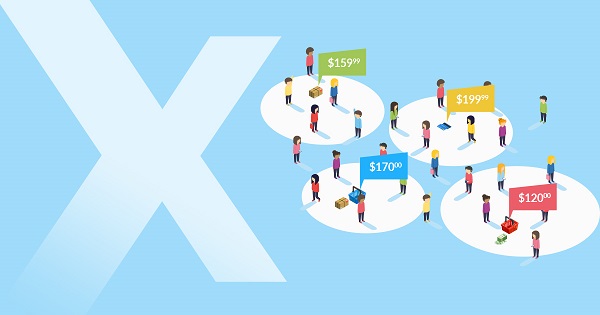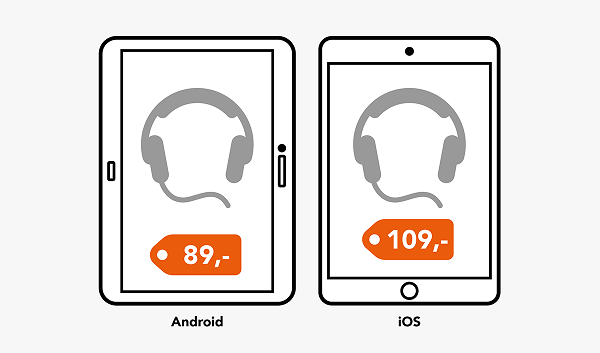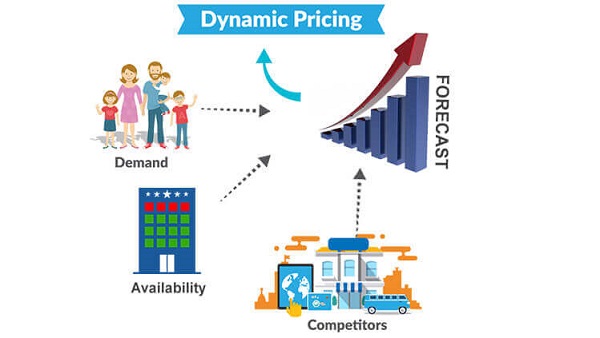Real-time Pricing vs. Price Discrimination
It is a very common mistake to think that dynamic pricing and price discrimination are the same thing. But they are not. The difference between the two is what they are based on. Dynamic pricing is based on market conditions at that given moment and on the other hand, price discrimination is based on customers’ characteristics. In this post, we are going to explain how both of them work.
Price discrimination is when a retailer offers the same product to various customers for different prices, depending on how, when and where they shop. Let’s assume that there are two customers shopping via smartphones for new headphones. One is using a Samsung phone, and the other one is using an iPhone. A seller can decide to charge a couple of dollars extra for the one using the iPhone. Why would he do that, you might ask yourself. Well, that phone is more expensive, so the seller expects of its owner to pay more for everything else.
On the other hand, when a retailer is using dynamic pricing he offers the same price to everyone, but that price is constantly changing. What affects the price of the products are the current market conditions such as demand, supply and competitors’ behavior. Because of this, it can happen that the price of a product on the same website isn’t the same in the morning and the evening. One or more factors had changed during that time and sellers had to change it. We are going to see how each of them can affect the price:
- Demand – If the product is very popular among the customers, you can always increase the price and still expect to sell a large amount of product. And if there is no demand for the product, you can try to create it by offering a discounted price. Of course, that discount should never jeopardize your profit.
- Supply – This case is similar to the demand one. If the retailers are offering too much of the same product, they will have to lower the prices, because customers can choose from many competitors and they will go for the most affordable one. When there isn’t enough of the product on the market, people are willing to pay more to get it, so the retailers can raise up their prices.
- Competitors’ behavior – Different competitors change their prices with different frequencies. Some do it more than once a day (Amazon does it every couple of minutes), others weekly, and some others change them only when they are forced by the market conditions. If you want to stay in the business and be competitive, you shouldn’t be like the last mentioned group. You have to keep a close eye on what your competitors are doing. That allows you to adjust your prices accordingly and stay competitive on the market.
Click here to learn more about the benefits of dynamic pricing.
What do you get from implementing dynamic pricing into your business strategy?
First, you will start being proactive, which is very important if you want to stay in the game and on the market. You will always know what your next move is, which gives you a sense of security. And, if there are some drastic changes happening on the market, you will be more prepared than the others. Maximizing your profit is a major benefit that you get from dynamic pricing. You will be able to set the prices that will allow you to sell as much as possible at that time. When it comes to the main downsides of this, we all know the answer; the competitors. If everybody is using dynamic pricing it can be hard to keep track of how and when they’re changing their prices. Because of this, you need a pricing tool that has the Dynamic Pricing Module. These tools are highly specialized in helping retailers keep up with all the changes happening in the market.
Whatever you chose to implement in your strategy, dynamic pricing or price discrimination, you have to understand that some consumers will feel deceived and go look for someone who doesn’t change their prices often. That is a risk that you have to be willing to take. But in the long run, strategies like these will pay off. You will be more prepared to respond to market needs and changes promptly, which is what will help you be better than your competition.
What do you think about price discrimination and dynamic pricing? Let us know. We would love to hear from you!






